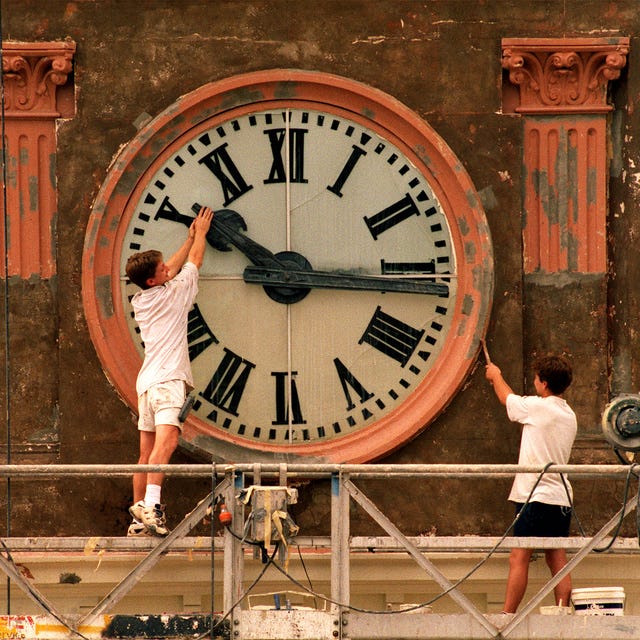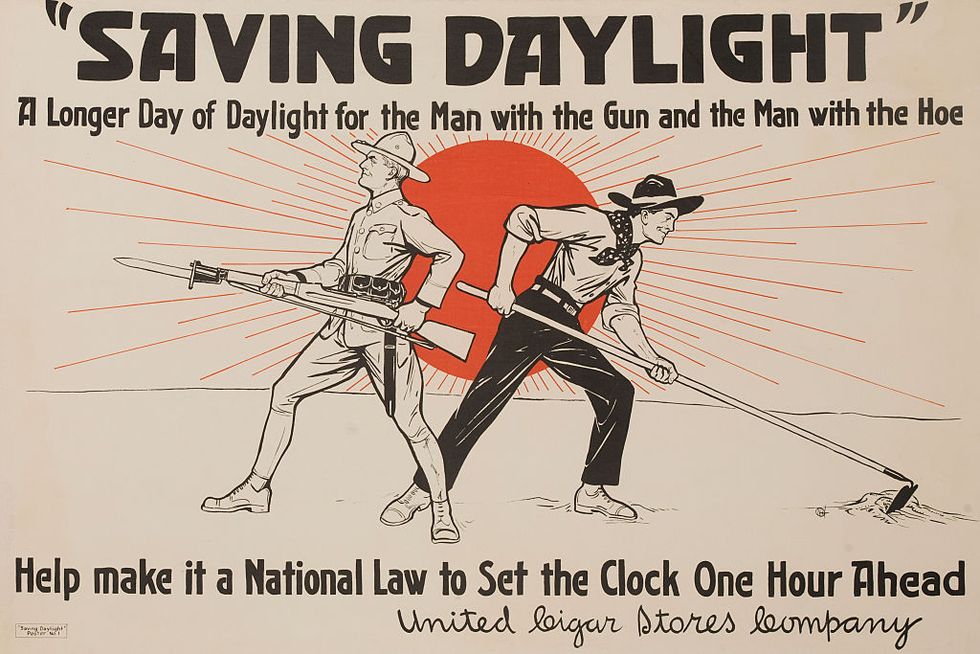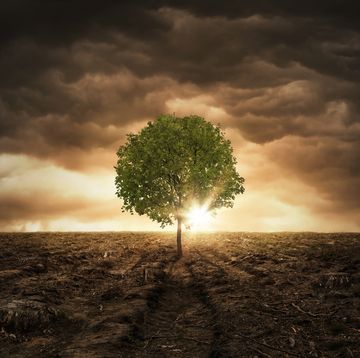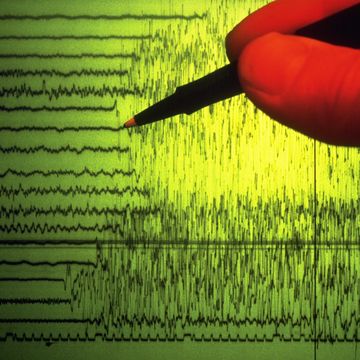Editor’s note, March 22, 2022: Children may have more time to play outdoors in the sunshine starting next year. The U.S. Senate approved legislation on March 15 to make Daylight Saving Time (DST) permanent in 2023.
The Senate approved the measure, called the Sunshine Protection Act, unanimously. If the House of Representatives passes the bill, and President Joe Biden signs it, then Americans will no longer have to spring their clocks forward in March and fall back in November. Instead, people would set their clocks forward one hour in March 2023 and leave them alone after that.
Proponents of the bill say permanent DST would reap health and economic benefits. Businesses could get more customers in the waning hours of the day. Sleep disturbances from the sudden schedule change would be eliminated. The U.S. Department of Transportation, which oversees DST and the country’s time zones, says maintaining the same time all year could remove the slight uptick in car accidents and workplace injuries that occur in the days following a clock change.
So far, 30 states have introduced bills to end the changing of clocks. The Sunshine Protection Act would allow U.S. states like Arizona and Hawaii, plus U.S. territories of American Samoa, Guam, the Northern Mariana Islands, Puerto Rico, and the U.S. Virgin Islands to remain on standard time.
Daylight saving time, or DST, started last week. All across the country (with a few notable exceptions), people moved their clocks forward an hour in the wee hours of Sunday, March 15, losing out on a precious hour of sleep.
Beside making the world seem like a darker place, one annual effect of this event is a huge proliferation of articles proclaiming that DST is a garbage idea that needs to end. It doesn’t really help anyone, they say, but it does throw off sleep schedules around the country. As a result, even more states and cities are considering bills to do away with DST.
☀️ Science is on our side. We’ll help you make sense of it all.
What these articles and arguments tend to ignore is that DST is a bizarre idea in the best way possible: It is a human attempt to force our lives to fit the natural world in a more sensible way, to #lifehack ourselves into a pattern of living that benefits our minds and bodies. DST is both a rebellion against the clock and an acceptance that we are all slaves to the clock.
It is amazing that anything this wacky, this totally loopy, ever actually took hold, and it’s even more amazing that it’s not just accepted, but the norm. And the reason it became the norm is because, though it certainly isn’t perfect, it is extremely hard to argue that DST on the whole does more harm than good.
The fundamental misunderstanding of DST is a result of us Americans (humans, really) being impatient and all too willing to miscalculate the harm of short-term problems over subtle long-term benefits. Remember! DST is not the two days per year (“fall back” and “spring forward”) when we move our clocks around. DST is eight months long; those two days are the beginning and the end of DST. To focus on just those two days is ridiculous, says David Prerau, the author of Seize the Daylight: The Curious and Contentious Story of Daylight Saving Time and one of the world’s leading authorities on DST.
“There’s a big difference between the effects of the one-hour change from standard time to daylight saving time—those effects take place over a day, maybe up to three days—versus daylight saving time itself, which lasts eight months,” he says.
Critics of DST often focus their criticisms around those two days per year, citing confusion, schedule disruption, and even health problems. A 2012 study indicated that in the few days around the springtime clock change (the beginning of DST, in other words), incidents of heart attack rose by 10 percent. Never mind that heart attacks were found to decrease around the time of the autumn clock change … also by 10 percent. Never mind that heart attacks are much more likely to come in the winter and early spring than any other time of year, period. Statistics like that are pretty easy to twist to your liking.
In reality, DST is an eight-month experiment designed to make life, well, more pleasurable for humans. The basic idea: In the Western world, we typically spend more awake time in the evenings than in the mornings. We also enjoy many benefits from being awake in the sunshine. This National Institutes of Health overview is a good place to read about vitamin D, increased exercise, increased socializing, and overall improvements to mental health that come with sunlight.
Absent DST, for eight months per year our days would not be structured to enjoy the most sunlight possible. Our mornings would be bright and cheerful, but the sun would tend to be set before we leave work each day. This stinks! This gives the average 9-5 adult very little time to enjoy sunlight. So during the spring, summer, and early autumn, we tweak it, just a bit, so that there’s more sunlight in the evening. In the winter, we abandon DST, because there just isn’t enough sunlight to make a difference. Winter is pretty much a dark hellworld no matter how it’s scheduled. Winter DST would give us a very, very late sunrise and not enough light in the evening to provide the effects we want.
So let’s talk benefits. A 2015 paper from the Brookings Institute found that there’s a 7 percent decrease in crime following the shift to DST. In 2007, when DST was extended through November 1 (a decision on which Prerau was an advisor), that drop resulted in an estimated $59 million in savings from robberies not committed. (If you include crimes for which we must estimate dollar amounts, such as rape, that number goes up to $246 million. Those estimates involve medical costs, prosecutions, police expenses, that kind of thing.) The reason is simple: crimes tend to happen much more often in darkness. Extend the daylight, and crimes, especially outdoor crimes like muggings, go down.
Originally, DST was thought to be a major driver of energy savings. With more sunlight, people could rely on the sun for light and heat, instead of burning wood and lighting candles. Cheaper and better for the environment! In recent years, those claims have come under fire, but here’s the thing: Anyone who tells you anything unambiguous about the effects of DST on energy use is lying. Research is hard to conduct simply because DST has been in effect for so long that it’s hard to accurately measure what energy use would be like without it, and energy use varies so widely in this country based on location and economics that it’s basically impossible to get an overall rigorous look.
Here’s an example: In Indiana, a 2006 study found that DST created a 1 percent rise in energy use, the opposite of what it’s intended to do. (The proposed reason: People run their air conditioners more, which wasn’t a problem when DST was conceived because there was, you know, no electricity.) But in 2007, a California study found a slight decrease in energy use, though one within the margin of error. And in 2008, the Department of Energy conducted a massive nationwide study that found a decrease in energy use of about 0.5 percent—doesn’t sound like much, but that’s about 1.3 billion kilowatt-hours. That’s enough to power a dishwasher in every single US house for more than a week straight.
Another contentious statistic: traffic accidents. Opponents of DST note that, in the week following the spring clock change, traffic accidents spike. This is true! But, again, DST lasts eight months, not a week, and the net effect of DST on traffic accidents is overwhelmingly positive. In fact, studies actually estimate that we could save about 366 more lives per year if we extended DST all year round. It is, very simply, easier to drive in daylight. Yet the impact of sunlight on driver safety is far more complex than that.
“There’s much more traffic than in the evening rush hour than in morning,” says Prerau. “The morning only has commuters; the evening has commuters plus people who are going out for other reasons,” whether that’s going to dinner or parties or various afternoon activities. Not many people are driving around in the morning if they’re not going to work, so it makes sense to arrange things so driving is safest in the evening.
Some industries hate DST, and for good reason. Farmers, contrary to the strange and completely false belief that DST was created for them, actually despise it: Their schedules are entirely run by sunlight rather than the clock, and so when everybody else changes their clock, it throws a wrench into their day. Tasks like harvesting have to be done in concert with the sun’s position, so if their driver, manufacturer, or packager suddenly has to come to work an hour later, that can screw them.
TV executives hate it, too. As a matter of fact, anyone whose industry relies on people staying inside hates DST. TV ratings always, always go down during the first bit of DST, when its effects are dramatic. But is that necessarily an argument against DST? Should we really be saying that it’s more important for people to watch TV than to go outside?
The industries that love DST tend to be outdoorsy: Prerau names the National Park Department, outdoor equipment manufacturers, and even urban stores and outdoor malls (since people will be more likely to walk around and window shop) as beneficiaries of more light.
But the biggest reason why DST is worth keeping? It’s a perfectly imperfect, fantastically weird idea with noble intentions. There aren’t that many of those that actually get any traction, and DST has firmly anchored itself in our lives. Let DST stay. It just wants to make your life better.














